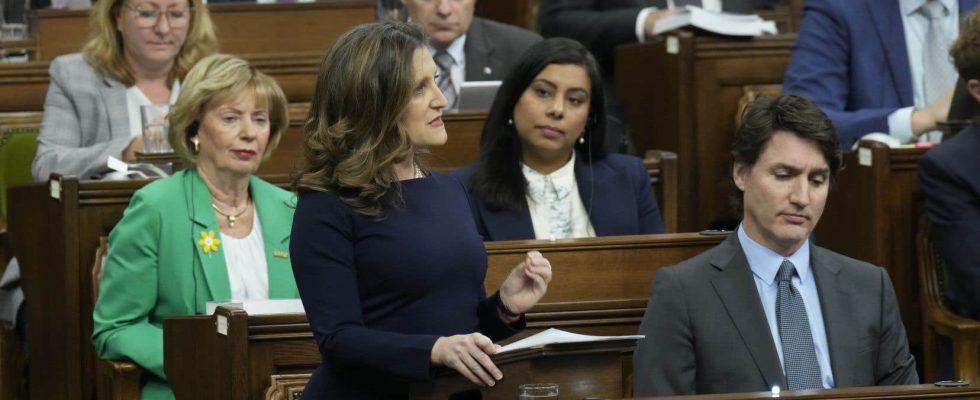The budget tabled yesterday by Minister Chrystia Freeland shows that the Liberal government is aware of the electoral challenge that awaits it this fall, but not necessarily of the extent of the social, economic and environmental challenges facing Canadians. This budget offers an anthology of half-measures, beneficial for several segments of the population, but overall insufficient and too unambitious.
Foreseeing revenues of $497.8 billion and expenditures of $537.6 billion, this budget is already attracting criticism from supporters of fiscal conservatism given its announced deficit of $39.8 billion. Yet Canada’s debt as a proportion of its GDP remains the lowest of all G7 states. Canada’s situation is far from alarming, as its average debt is only 15%. The last fiscal year even allowed a decline in the federal debt relative to GDP.
A key measure of this budget is the increase in capital gains taxation. Those above $250,000 will be taxed at 66% for individuals and businesses. Potentially, this measure can generate additional federal revenues of approximately $4 billion per year. Although this initiative goes in the direction of greater tax fairness, it appears to be a necessary catch-up that comes after years of regressive tax measures. Furthermore, nothing has been announced regarding the fight against tax evasion and tax avoidance by large fortunes and large companies.
Faced with the raging housing crisis, the government announced a series of measures including the use of federal land for the construction of new housing and the transformation of federal buildings into residential homes. The measures announced appear interesting, but it is worrying to note that the development of non-market social housing remains the poor relation of federal housing programs. We must also question the real impact of measures intended to facilitate access to property. By increasing demand, could they not contribute to overheating the real estate market and, ironically, making the situation worse by causing prices to rise?
Budget 2024 also announces an investment of $1 billion over five years to establish a school food program in collaboration with the provinces and territories. However, a study published by IRIS in August 2023 showed that in Quebec alone, a universal school food program would cost $1.7 billion per year. It would therefore require investments of approximately $7.4 billion per year to extend this program across Canada. With the announcements made today, we are very far from the mark.
The latest budget also concretizes the establishment of a national drug insurance plan. In its first phase, this plan will cover costs associated with contraception and diabetes medications. We may wonder about the fact that the government has given no indication of the timetable and budget planned for the full deployment of a program that would cover all medications, which would constitute undeniable progress.
In fact, Canada is the only rich country with health insurance that does not include prescription drug insurance. In addition, after Switzerland and the United States, Canada is the Organization for Economic Co-operation and Development (OECD) country with the highest prices. Public drug insurance will therefore allow Canadians to save on drug costs and allow the poorest households to avoid having to cut their essential expenses to be able to pay for their prescriptions.
When it comes to the environment, this budget is a big disappointment. Surprisingly, transit gets no additional funding. And in terms of energy consumption, the government is reducing programs and incentives to improve the energy efficiency of homes across the country. However, a study by a research center affiliated with Carleton University estimated in 2021 that Canada would have to invest between $20 and $40 billion annually to improve the energy efficiency of its buildings and thus substantially reduce energy consumption. in Canada.
Finally, the total National Defense budget continues to increase and will reach $44.2 billion in 2025-2026, more than double the 2015-2016 expenditures ($18.7 billion). Canadian military spending deprives us of amounts that could be invested elsewhere, such as in programs that would improve the lot of citizens or that would support the ecological transition.
In short, whether through its timid fiscal progressivism, its housing strategy minimizing the role of non-market housing, its non-universal school feeding program or its incomplete drug insurance plan, this budget is half-hearted. measures.
